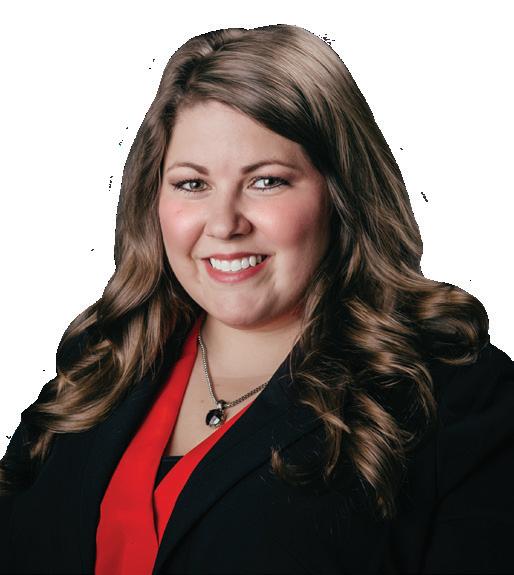
4 minute read
Agricultural Lending
BANKING SURVEY ANALYZES Agricultural Lending
Anational survey of nearly 500 loan officers, managers and executives offers a deep dive into attitudes among agricultural lenders regarding farm liquidity, income and leverage as well as the impact of tariffs and trade, COVID-19 and the weather.
The American Bankers Association, in partnership with secondary market ag creditor Farmer Mac, conducted in August and September an exhaustive online poll of lender sentiments and conditions. The financial institutions represented ranged from banks less than $50 million in assets to those with more than $5 billion in assets.
One of the key takeaways suggests the agricultural economy and farm income remain stressed in 2020. The majority of agricultural lenders surveyed (79.2%) noted compression in farm profitability.
Top factors in agricultural lending circles include borrower liquidity, tariffs and trade, the weather, the impacts of the COVID-19 pandemic and the resulting economic downturn. Lenders across all regions and sizes also expressed concerns with credit quality and competition for loans.
Liquidity (e.g., working capital) Farm income levels Total leverage Uncertainty around tariffs & trade Weather COVID-19 spread Land rents Farm labor (e.g., cost or availability) Third party financing Water availability
0
LENDERS’ TOP CONCERNS FOR PRODUCERS
Most Concern
1 2 Least Concern
3 4 5 6 7 8 9 10
Source: ABA-Farmer Mac Agricultural Lenders Survey August 2020
LOAN DEMAND, CREDIT QUALITY
Credit quality and the deterioration of agricultural loans remains the No. 1 concern facing lenders in 2020. That sentiment was shared by respondents from institutions of all sizes and across all regions, the report noted. This includes lenders from the South - which includes Arkansas - where banks identified “competition with other lenders” as their primary concern the previous two years.
“As the farm economy continues to work through a prolonged downturn in the midst of an unprecedented, global economic dislocation, ag lenders remain primarily concerned with
the same three factors as last year: credit quality and the deterioration of agricultural loans (72.1% ranked it among their top 2 concerns), competition from other lenders (37.3%) and weak loan demand (25.5%),” the report said.
Among those competitors for loans, the majority of survey respondents (78.9%) cited the Farm Credit System (FCS) as their No. 1 competitor for agricultural loans. More than two-thirds of lenders (66.9%) ranked community banks within their top two competitors, followed by vendor financing (17.1%), regional banks (8.9%), and credit unions (8.0%).
TOP CONCERNS FACING AGRICULTURAL LENDERS
Credit quality and ag loan deterioration Lender competition Weak loan demand Interest rate volatility Shrinking market due to farm consolidation
5%
Lack of qualified ag lenders Strong loan demand Ag lender consolidation 3rd party vendor service availability Shrinking market due to population
72% 15%
37% 33%
26%
17%
12%
13%
12%
22%
12% 21%
24%
26%
23%
20%
decreases
Relative Concern Ranking 1,2-High 3,4 5,6 7,8 9,10-Low
Source: ABA-Farmer Mac Agricultural Lenders Survey August 2020
Other survey takeaways in the area of lending included:
• More than four-in-five lenders report that farm debt grew during the past 12 months (82.2%), which is consistent with the September USDA farm sector income forecast that projects farm sector debt will rise 3.6% to $433.8 billion and ag real estate debt will rise 5.5% to $281.6 billion in 2020. • Loan growth was generally reflected across all regions and asset sizes, though a third of lenders in the South said that farm debt held about the same in the last year. Despite increasing levels of farm debt, a majority of lenders say that the number of farmers expanding or shrinking operations stayed about the same in 2020 (62.0% and 66.7% respectively). • Survey respondents generally expect higher ag loan delinquency rates heading into 2021 for both production (59.9%) and ag real estate (46.7%), though, a majority expect loan charge-off rates to stay about the same (61.5% and 70.4%, respectively).
PANDEMIC & PAYMENTS
The COVID-19 pandemic and subsequent economic downturn played a significant role in uncertainty regarding agricultural loans, according to the survey.
“There is modest evidence that banks that have been more heavily impacted by COVID-19 have lower profit expectations,” the report said. “Many institutions reported modifying ag borrower loans due to either the coronavirus or the resulting economic turbulence. Of banks who indicated that they modified at least a quarter of their agricultural loans, average profit expectations were 46% for 2020. For banks that modified less than 10% of their ag loans as a result of the pandemic, expectations were just over 53%.”
Farm income has been under pressure for several years due to trade wars, weather and struggling commodity prices. The pandemic added another layer of fraught for agricultural borrowers and their lenders. The survey noted that 43% of lenders had been asked by borrowers about hemp financing as a new crop option. Another one-third (33.9%) inquired about financing for renewable energy projects, slightly down from 36.8% in 2019.
Most interestingly, this year’s survey showed a very high number of borrowers inquiring about government payment programs. The poll reported 87.4% of respondents noting that ag borrowers’ reliance on government payments in 2020 increased. Roughly 68% inquired about government programs like the Coronavirus Food Assistance Program (CFAP) and Market Facilitation Program (MFP), while 58% researched the Paycheck Protection Program. About one out of five ag borrowers (18.1%) requested a loan modification in 2020 as a result of the pandemic and resulting economic downturn.
SHARE OF BORROWERS INQUIRING ABOUT GOVERNMENT PROGRAMS
70% 60% 50% 40% 30% 20% 10% 0% Coronavirus Paycheck Economic Main
Food Protection Injury Street Assistance Program Disaster Lending
Program Loan Program or Market Facilitation Program Source: ABA-Farmer Mac Agricultural Lenders Survey August 2020
Beyond inquiries, lenders also noted an increasing reliance on these government payments, particularly CFAP and MFP.
“Lenders expect this trend to continue next year: one in five expect that borrowers’ current reliance will stay about the same in 2021, while 77% expect reliance to rise,” the report noted.










